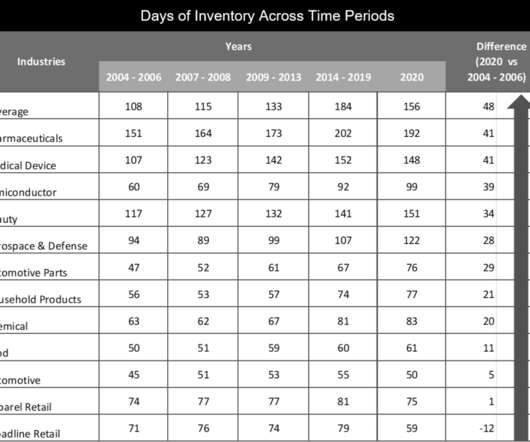How We Stubbed Our Toe in The Evolution of S&OP
Supply Chain Shaman
FEBRUARY 14, 2022
Industries carried on average 32 days more inventory in 2020 than in 2007. (I Organizations can align to drive value despite the allegiance to functional metrics. The industry considers the company a leader, but I know the dark side that internally, the IT processes squash innovation. I give you this evidence in this blog.).
















Let's personalize your content